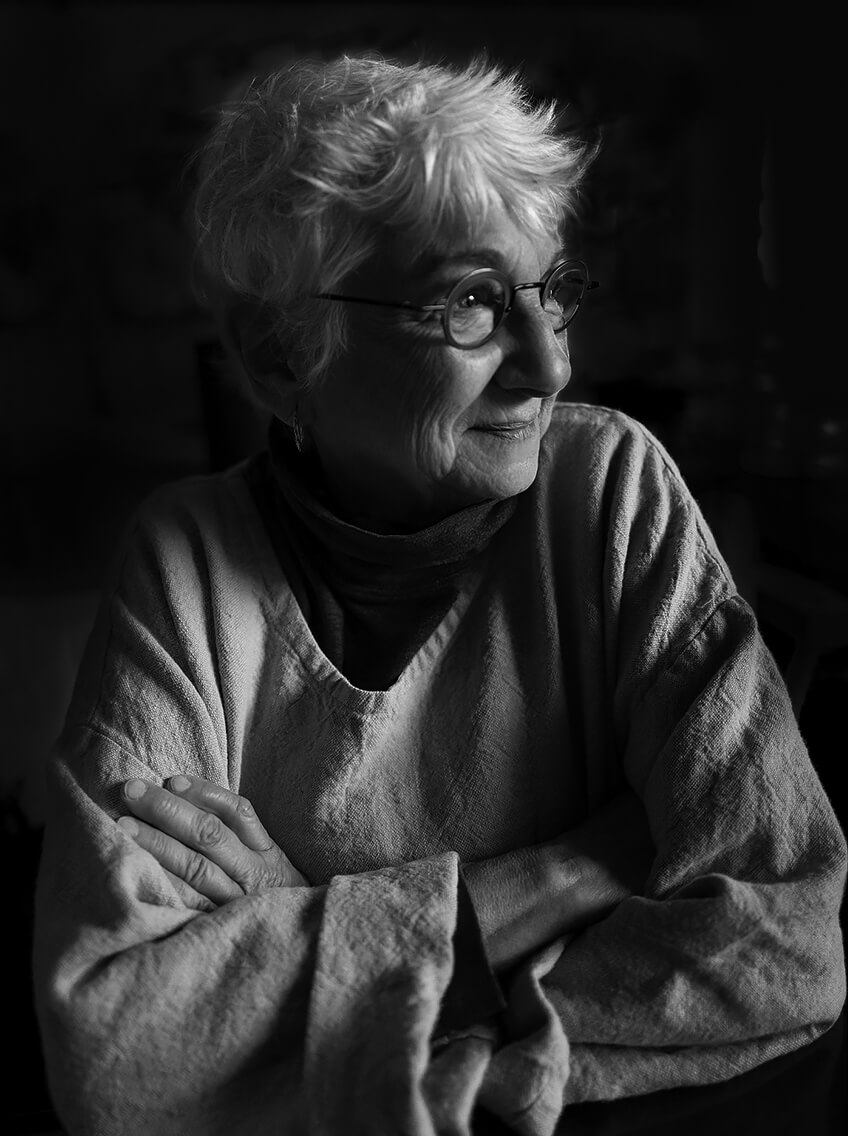Fran's photo paintings have been exhibited widely, both locally and internationally, and are in many private collections as well the permanent collections of the Museum of Fine Arts Boston, the Smithsonian National Air and Space Museum (Washington, DC), the Museum of Fine Arts, Houston, The Grace Museum (Texas), the Sunnhordland Museum (Norway), Western Carolina University Fine Art Museum, the Comer Collection at the University of Texas, and the County Down Museum (Northern Ireland).
Fran's 2nd major monograph, The Rest Between Two Notes, with 100 color plates and 224 pages is published by Unicorn Publishing and available March 2020.
Escape Artist: The Art of Fran Forman was published by SchifferBooks and was selected as one of the Best PhotoBooks of 2014 by Elizabeth Avedon and won First Place in an international competition.
Monographs of Fran's solo exhibitions were published by Pucker Gallery in 2018, 2016, and 2014. Fran is also featured in Contemporary Cape Cod Artists: People and Places, 2014, Photoshop Masking and Compositing, 2012, and Internationales Magazin fur Sinnliche Fotografie (Fine Art Photo), 2014, The Hand Magazine, 2016, Blur Magazine (2016), two Pucker Gallery publications, and Shadow and Light, 2015 and 2018. She was Artist in Residence at Holsnoy Kloster, Norway, in 2016 and at The Studios of Key West in 2015. Additionally, she is often asked to juror and curate photo exhibitions.
Most recently, Fran has mounted solo exhibitions at The Fox Talbot Museum, Lacock Abbey, England, The Massachusetts State House (The Griffin Museum of Photography), AfterImage Gallery (Dallas), the University of North Dakota, Galeria Photo/Graphica (Mexico), and the Pucker Gallery (Boston), as well as numerous group shows. In the past decade, Fran has won numerous significant awards and prizes; most recently, first place from the Julia Margaret Cameron awards and three awards (First Place, Gold and Silver) from PX3 Prix de la Photographie, Paris. In 2011, she exhibited at the 2nd Biennial International Exhibition, Lishui, China (one of only thirty Americans); she also won the second prize from the World Photography Gala Award (out of over 8000 entries) in People and Portraits; in 2010, she won 1st place in Collage for the Lucie Foundation's International Photo Awards (IPA). She was also a finalist for four straight years in PhotoLucida's Critical Mass.
She is represented by Pucker Gallery (Boston), AfterImage Gallery (Dallas), SusanSpiritus Gallery (California), and Galeria Photo/Graphica (Mexico).
She is an Affiliated Scholar at the Women's Studies Research Center at Brandeis University, a recipient of several grants and Artist Residencies, and teaches advanced photo-collage internationally.
Fran studied art and sociology at Brandeis University, received an MSW in psychiatric social work, and then an MFA from Boston University. She resides in the New England area.
Selected Books on

